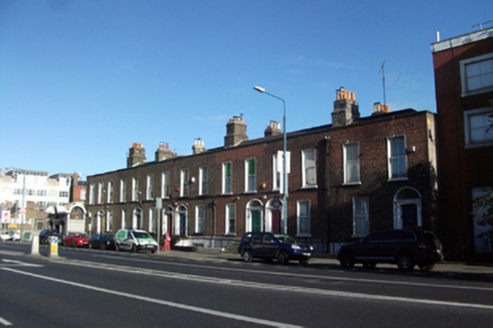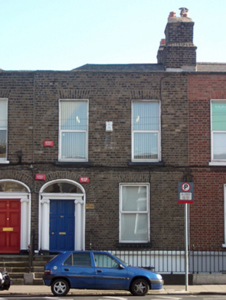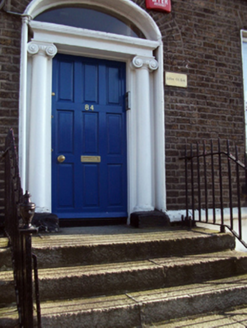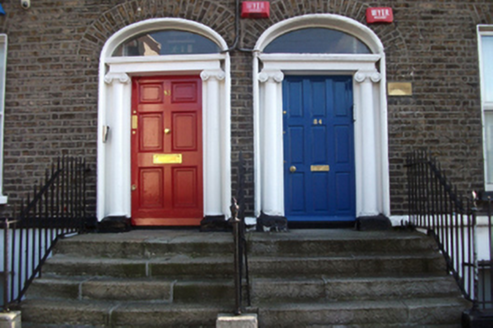Survey Data
Reg No
50010088
Rating
Regional
Categories of Special Interest
Architectural, Artistic
Original Use
House
In Use As
Office
Date
1830 - 1835
Coordinates
316786, 235190
Date Recorded
18/10/2011
Date Updated
--/--/--
Description
Terraced two-bay two-storey house over raised basement, built c.1832, now in use as office. Part of terrace of seven similarly-scaled buildings. Shared recent extension to rear (east). M-profile hipped slate roof with hips to north behind yellow brick parapet wall with squared granite coping. Two stepped partially-rendered yellow brick chimneystacks with clay pots to party wall, shared with No.85 to south. Aluminium rainwater goods to rear. Flemish bond yellow brick walls with rendered granite plinth course over rendered walls to basement. Rear (east) elevation of yellow brick in English garden wall bond with granite plinth course over cement-rendered basement. Recent brass sign flanking doorcase reading: 'Liffey Oil Ltd' and possible circuit box casing reading 'Oxford' to north of doorcase. Square-headed window openings with gauged brick voussoirs, rendered reveals and granite sills, having replacement uPVC windows throughout. Recent cast-iron window guards to basement opening and steel window guards to rear elevation openings. Three-centred-arch door opening with gauged brick voussoirs, moulded surround and painted timber and stone doorcase. Replacement timber panelled door flanked by engaged Ionic columns on plinth blocks, with lintel cornice forming support to single-pane replacement fanlight. Door opens onto granite flagged platform shared with No.83, having cast-iron bootscraper and granite stepped approach bridging basement area. Approach flanked by wrought-iron railings with cast-iron corner finials on granite plinth. Projecting wall to west of basement area having artificial slate roof and original timber door with cast-iron door furniture. Original cast-iron coal hole cover set in granite slab to front pavement. Rear of site flanked by steel fence and matching gate on low rubble stone wall.
Appraisal
This modest former townhouse forms an integral component of an intact terrace of informally paired buildings whose massing offers variety from the ubiquitous three and four-storey Georgian streetscape. Despite the loss of some original features, the building retains an original doorcase, vault access door and its original fenestration pattern, and shares a common parapet line and overall composition with its neighbours. It importantly assists in bolstering the original Georgian character of the street. Situated at the former northeast boundary of the Gardiner Estate, Amiens Street was laid out from the early eighteenth century and was renamed after Viscount Amiens, the first Earl of Aldborough, before developing further in the nineteenth century in conjunction with the canals and railway.







